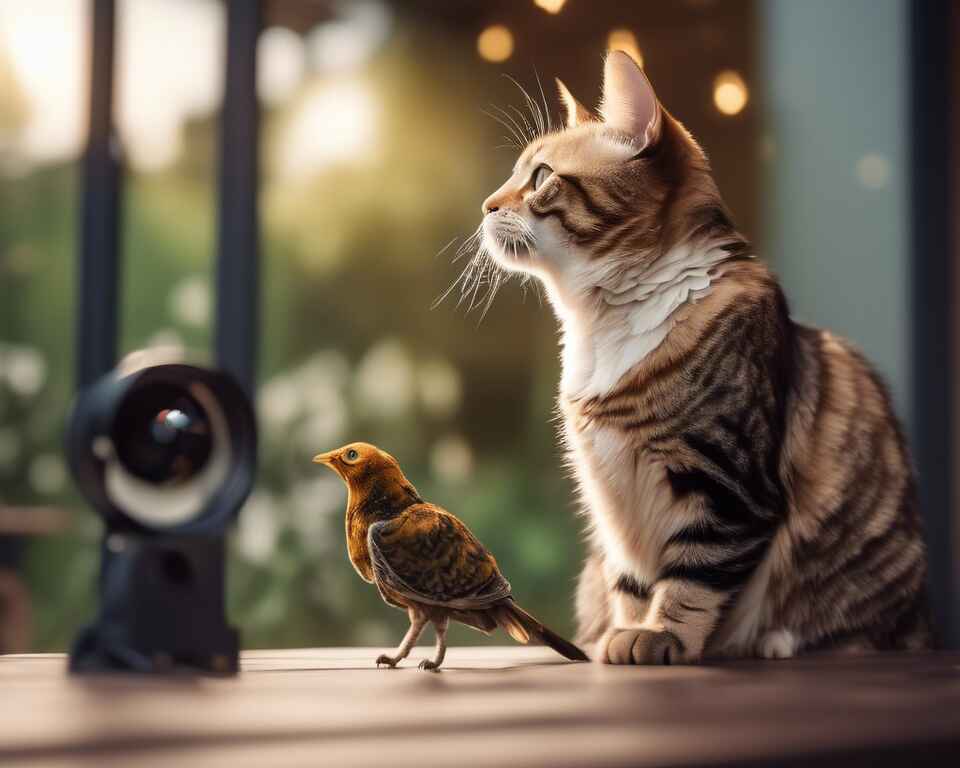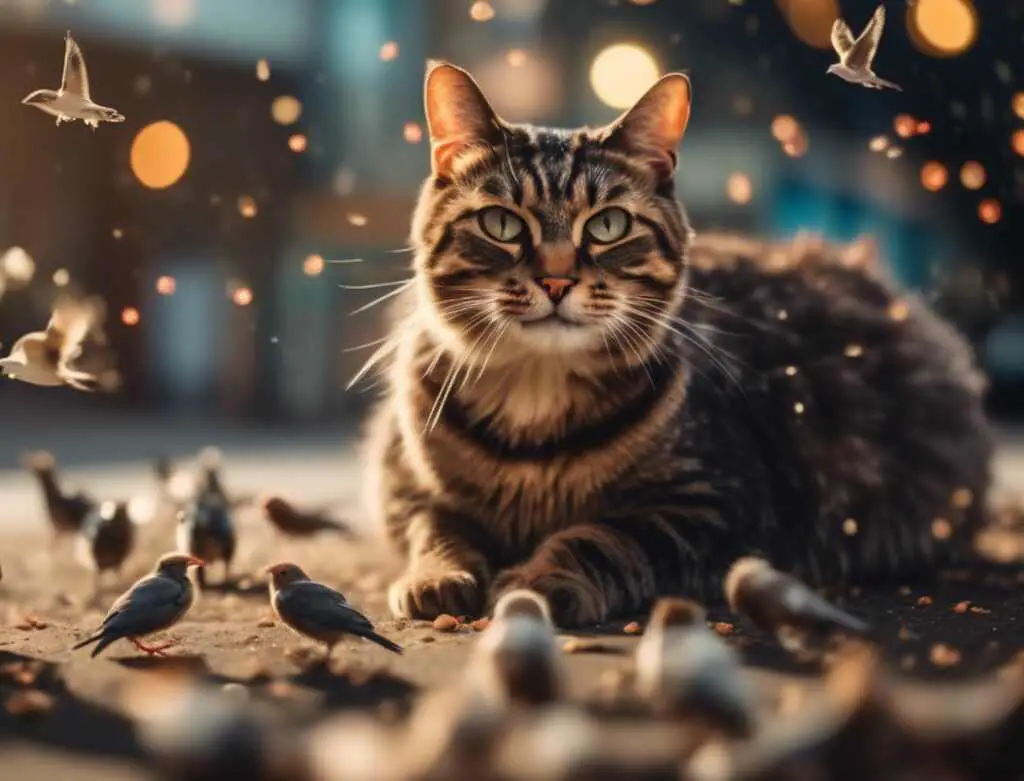The impact of cats on bird populations is a significant concern for conservationists and researchers. Cats, both pets and strays, are natural hunters, and their hunting behavior can have serious consequences for bird populations. How many birds do cats kill every day? This question is important because it helps us understand the impact cats have on the birds that share our environment. Let’s explore this issue to grasp its implications for both cats and bird populations.
Table of Contents
How Many Birds Do Cats Kill a Day?
Exploring the Impact: How Cats Contribute to Bird Mortality
Cats are known for their natural hunting instincts, often displaying their prowess by catching birds. This behavior raises the question: how many birds do cats actually kill in a day? While it may be challenging to pinpoint an exact number, research and studies offer valuable insights into the impact of cats on bird populations.
Understanding Cats as Predators
Cats, whether domestic or feral, are skilled hunters with a strong hunting drive. Their agility, sharp senses, and instinctual behaviors make them efficient predators, capable of capturing birds with precision. While domestic cats rely on humans for food, their hunting instincts remain intact, leading them to pursue birds and other small animals.
Estimating Bird Mortality Rates
Various studies have attempted to estimate the number of birds killed by cats. In the United States, cats are estimated to kill between 1.3 to 4 billion birds annually, highlighting their significant impact on bird populations. This translates to approximately 3.6 million to 11 million birds per day.
The number of birds killed by cats can vary widely depending on the region and the density of the cat population. For instance, in the United Kingdom, estimates suggest that cats kill around 27 million birds each year, which averages to about 74,000 birds per day.
These figures underscore the substantial effect that domestic and feral cats have on bird populations, making it an important consideration in wildlife conservation efforts. It’s worth noting that these estimates can fluctuate based on factors such as cat behavior, bird species abundance, and local ecosystems.
Factors Influencing Bird Deaths
Several factors influence the number of birds killed by cats. Factors such as the cat’s hunting skill, the bird species in the area, and habitat characteristics play a role in determining the mortality rate. Cats tend to target species that are easily accessible and exhibit behaviors that trigger the cat’s hunting instinct.
Consequences for Bird Populations
The predation of birds by cats can have detrimental effects on bird populations, especially for vulnerable species. The loss of bird populations can disrupt ecosystems, affect biodiversity, and lead to imbalances in the natural environment. Conservation efforts often emphasize the importance of managing cat populations to mitigate their impact on bird mortality.
Managing Cat Predation
To address the issue of cat predation on birds, various strategies can be implemented. These include keeping cats indoors, providing enrichment and stimulation for indoor cats, using collars with bells to alert birds of approaching cats, and supporting trap-neuter-return programs for feral cat populations. By promoting responsible pet ownership and implementing targeted interventions, the impact of cats on bird mortality can be reduced.
The question of how many birds cats kill in a day sheds light on the complex relationship between domestic and feral cats and bird populations. While cats’ natural hunting instincts cannot be eliminated, proactive measures can be taken to minimize their impact on bird mortality. By understanding the factors influencing bird deaths and implementing effective management strategies, we can strive towards a healthier coexistence between cats and birds in the environment.

Impact of Cats on Bird Populations and Biodiversity
Cats are known for their hunting instincts, and their impact on bird populations and biodiversity has been a topic of concern among conservationists and researchers. Understanding the interactions between cats and birds is essential for implementing effective conservation strategies.
The Hunting Behavior of Cats
Cats are natural hunters, with domestic cats retaining their instinct to stalk and capture prey. This behavior is not limited to feral cats but is also exhibited by pet cats allowed outdoors. When cats are outdoors, they often hunt small animals such as birds, rodents, and insects. This hunting behavior is a significant factor in the predation of birds by cats.
Estimating Bird Mortality Caused by Cats
Research studies have attempted to estimate the number of birds killed by cats each day. While the exact number varies depending on factors such as the cat population, habitat, and prey availability, estimates suggest that a single cat can kill between 1 to 3 birds per week on average. When extrapolated to a larger scale, the cumulative impact of cat predation on bird populations becomes evident.
Implications for Bird Populations and Biodiversity
The predation of birds by cats can have serious consequences for bird populations and overall biodiversity. Birds play a crucial role in ecosystems as pollinators, seed dispersers, and regulators of insect populations. A decline in bird populations can disrupt ecosystem dynamics and lead to imbalances in the natural environment.
Conservation Efforts and Responsible Pet Ownership
To mitigate the impact of cats on bird populations, various conservation efforts have been implemented. These include promoting responsible pet ownership practices such as keeping cats indoors or providing them with supervised outdoor access. Additionally, initiatives such as TNR (trap-neuter-return) programs for feral cats aim to reduce their population and limit their impact on wildlife.
Finding a Balance
Finding a balance between protecting bird populations and ensuring the well-being of cats is essential. Responsible pet ownership, combined with community-based conservation initiatives, can help minimize the negative impact of cats on bird biodiversity. Educating cat owners about the importance of keeping their cats indoors or supervised when outdoors is a crucial step in reducing bird mortality caused by cats.
The relationship between cats and birds highlights the complex interactions within ecosystems. By raising awareness about the impact of cat predation on bird populations and promoting strategies for coexistence, we can work towards preserving biodiversity and creating a more sustainable environment for both wildlife and pets. Ultimately, finding a balance that benefits both cats and birds is key to maintaining healthy ecosystems for future generations.
Conclusion
The impact of cats on bird populations and biodiversity cannot be underestimated. With their hunting instincts deeply ingrained, cats have been reported to kill billions of birds each year, with estimates suggesting that a single cat may kill up to seven birds in a day. This staggering number can have significant implications for bird populations, particularly for vulnerable species. While it is important to acknowledge that not all cats are active hunters, it is vital for cat owners to take responsibility for their pets’ activities and reduce their impact on bird populations.
The relationship between cats and birds is complex and multifaceted. While cats are beloved companions in many households, they are also instinctual predators that can pose a threat to bird populations. The presence of cats in the environment can lead to the decline of bird species, disrupt ecosystems, and impact overall biodiversity. This highlights the need for proactive measures to mitigate the impact of cats on bird populations.
Understanding the extent of the issue is the first step towards finding solutions that strike a balance between the well-being of cats and the conservation of bird species. By raising awareness about the impact of cats on bird populations and promoting responsible pet ownership, individuals can play a crucial role in protecting bird biodiversity. Implementing strategies such as keeping cats indoors, using deterrents in outdoor spaces, and supporting local conservation efforts can help minimize the negative effects of cat predation on birds.
It is essential for cat owners to consider the well-being of both their pets and the wildlife around them. By taking simple steps to reduce cats’ hunting activities, such as providing them with alternative forms of enrichment and monitoring their outdoor behavior, owners can contribute to the conservation of bird species. Additionally, supporting initiatives that promote bird-friendly habitats, such as planting native vegetation and creating safe spaces for birds to thrive, can further enhance efforts to protect bird populations from the impacts of cat predation.
The question of how many birds do cats kill in a day unveils a larger issue concerning the relationship between domestic cats and bird populations. While cats are beloved companions, their predatory instincts can have detrimental effects on bird biodiversity. By raising awareness, encouraging responsible pet ownership practices, and supporting conservation initiatives, individuals can actively participate in safeguarding bird species from the threats posed by cat predation.
Ultimately, finding a balance between the well-being of cats and the preservation of bird populations is key to promoting a harmonious coexistence between domestic pets and wildlife in our environment.


